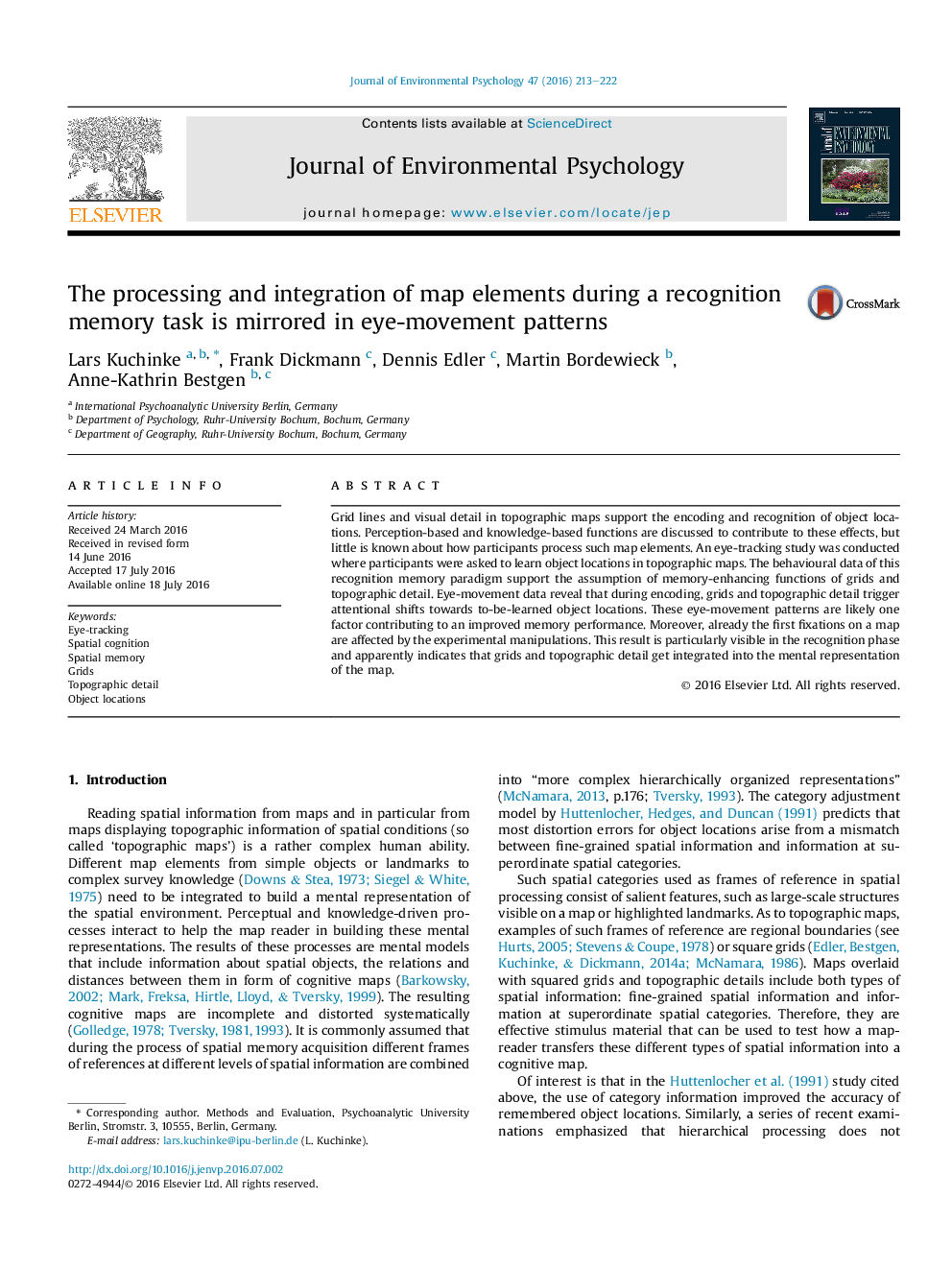| Article ID | Journal | Published Year | Pages | File Type |
|---|---|---|---|---|
| 7245561 | Journal of Environmental Psychology | 2016 | 10 Pages |
Abstract
Grid lines and visual detail in topographic maps support the encoding and recognition of object locations. Perception-based and knowledge-based functions are discussed to contribute to these effects, but little is known about how participants process such map elements. An eye-tracking study was conducted where participants were asked to learn object locations in topographic maps. The behavioural data of this recognition memory paradigm support the assumption of memory-enhancing functions of grids and topographic detail. Eye-movement data reveal that during encoding, grids and topographic detail trigger attentional shifts towards to-be-learned object locations. These eye-movement patterns are likely one factor contributing to an improved memory performance. Moreover, already the first fixations on a map are affected by the experimental manipulations. This result is particularly visible in the recognition phase and apparently indicates that grids and topographic detail get integrated into the mental representation of the map.
Related Topics
Social Sciences and Humanities
Psychology
Applied Psychology
Authors
Lars Kuchinke, Frank Dickmann, Dennis Edler, Martin Bordewieck, Anne-Kathrin Bestgen,
